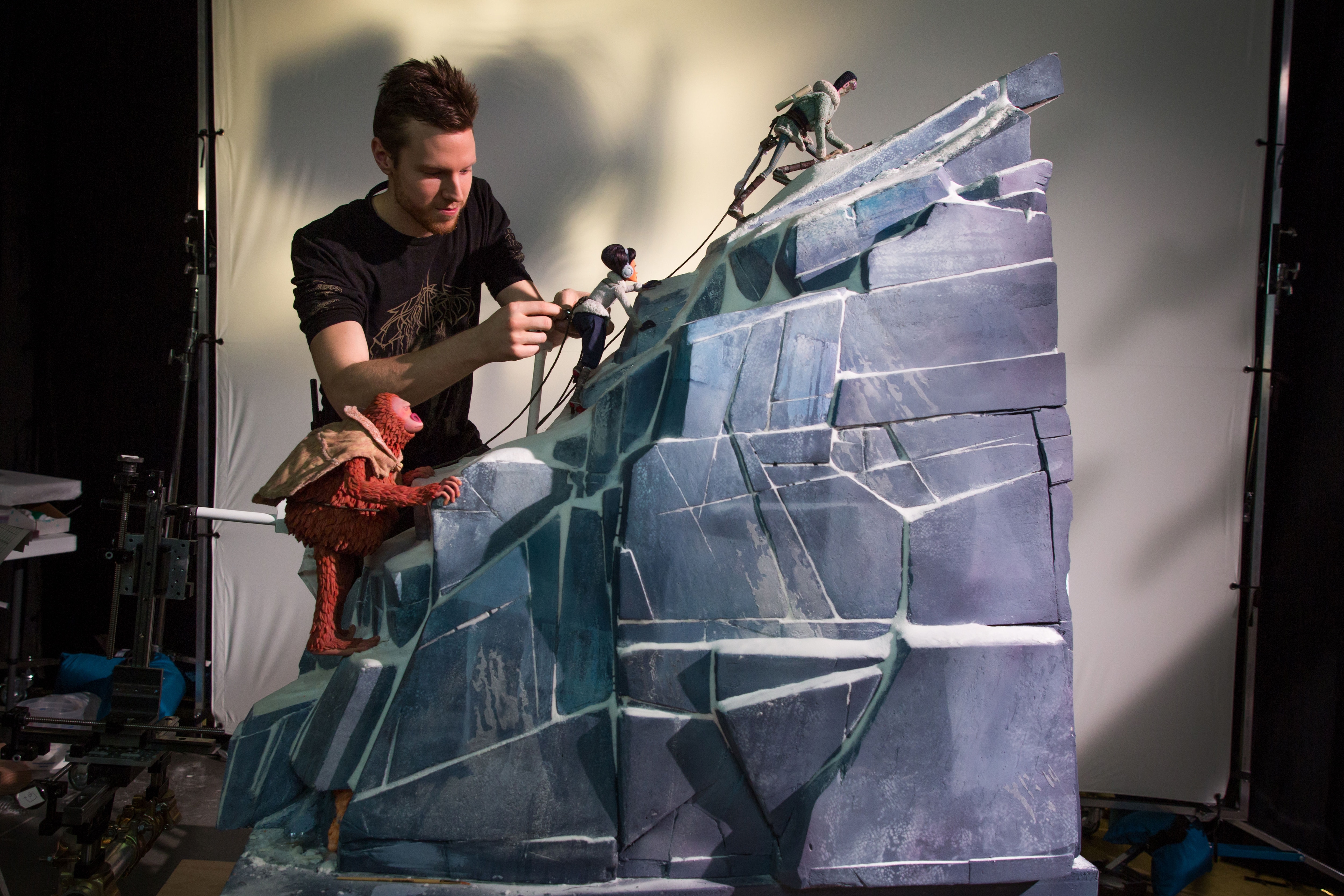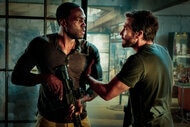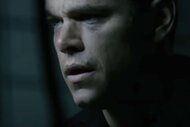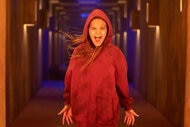Create a free profile to get unlimited access to exclusive videos, sweepstakes, and more!
Golden Globe winner Missing Link's animators braved possible icicle impalement to make the movie

Welcome to Awards Contenders. This month, SYFY WIRE is speaking to a long list of actors, artists, and artisans whose work earned them Oscars, Golden Globes, Critics Choice, SAG, and other nominations this year. Today, we speak with producer Arianne Sutner, production designer Nelson Lowry, and VFX supervisor Steve Emerson on the Golden Globe-winning stop-motion animated film Missing Link.
The puppets were in peril, but so were the puppeteers. After racing across a cracking, collapsing ice bridge (actually 64 blocks of clear-cast urethane resin), Missing Link's main Yeti had to save his tethered friends by hanging on to a dangling icicle (made of silicone and plastic resin).
Instead of shooting the character animation with a stand-in icicle and later replacing it with CGI, the Laika filmmakers had the puppets holding on for dear life to a real structure that weighed tons. It was counter-weighted by hundreds of sandbags and steel cables bolted onto the cement floor of the studio, but still risky. "We didn't want to impale our animators with those icicles!" production designer Nelson Lowry says. "They're hard to come by." (The animators, he means.)
Creating a breathtaking action sequence in stop-motion animation is hard, especially when that action is supposed to be taking place in the Himalayas. It became an issue of implied scale — it had to seem that the relatively small puppets were being dwarfed by the giant mountains — which were actually not really giant at all. But how to do this without reducing the puppets to the size of a snowflake?
"Everything is in miniature," says producer Arianne Sutner, "but in varying degrees. Lord, it was excruciating! The complexity of all the shots. We’re capturing 20 frames a day on a full, robust day. It defies the laws of good sense and sanity for the amount of detail and effort we spent on just one shot, but it's because we love what we do.”
Another especially tricky action sequence is the movie’s opening prologue, in which the Loch Ness Monster makes an appearance in the first of Missing Link's 65 locations. "It's a critical sequence when you’re talking about setting the tone and the look of the film," says VFX supervisor Steve Emerson.
When Emerson first read the script and saw that the characters would be situated on a boat in Loch Ness, he thought it would be a dark, moody, foggy environment, and he worked up concept art based on that. But director Chris Butler rejected his initial efforts. “I completely missed on that target,” Emerson says.
Instead, Butler wanted vibrant pinks and lavenders, signaling that this was not going to be another gothic stop-motion feature. And there was a major visual payoff — subtle 2D textures would repeat throughout the film. (The foam on the water in the storm replicates the grain on the floorboards of a bar in another scene.)
Although Laika did build a Nessie puppet and shot the animation with it, they discovered that the puppet wasn’t adequate for what the spectacular scene required — the puppet needed a capability for much more movement, to make specific shapes. So a digital duplicate was created (using the puppet as a reference), and that became the on-screen Nessie.
When the shoot was done, the Missing Link crew built a Nessie piñata and filled it with mini liquor bottles — enabling the dream of monster hunters throughout the ages: destroying a foul creature and then very quickly drinking to its demise.


























